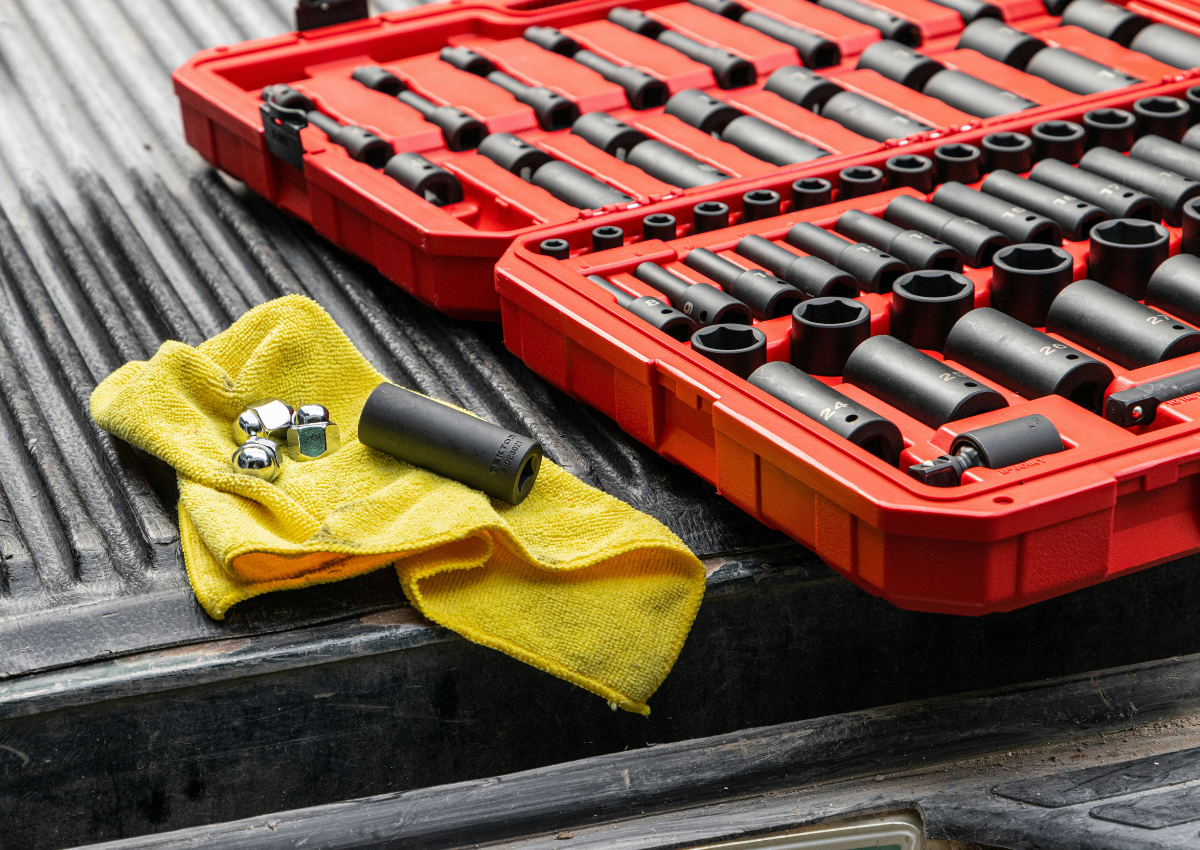Mon – Fri 8am – 10pm, Sat 9am – 5pm, Sun 9am – 10pm
Mon – Fri 8am – 10pm, Sat 9am – 5pm, Sun 9am – 10pm
Mon – Fri 8am – 10pm, Sat 9am – 5pm, Sun 9am – 10pm
Mon – Fri 8am – 10pm, Sat 9am – 5pm, Sun 9am – 10pm
Key Takeaways:

Over recent years, the scale of the problem has grown, with more tradespeople falling victim to these thefts and the average value of what’s stolen has risen. At the same time, the hidden costs are stacking up: there’s downtime without tools to work with, repairs, replacement hire and the erosion of trust from clients.
Essentially, the price of tool theft is far greater than just the value of the tools.
Here, we look at what those costs are and offer an effective way to protect you and your possessions.
A survey by Volkswagen Commercial Vehicles found that 28% of van drivers in the UK last year reported having tools stolen. That’s up from 19% in 2023.
It says the average value of thefts rose by more than 40%, from around £1,700 to £2,433. Around 27% of thefts were worth more than £3,500.
Volkswagen estimates the total annual cost to businesses is now £3.5 billion per year.
The firm’s head of product planning, John Ricardo-Neto, told us: “Tool theft remains a huge issue for van drivers and businesses in the UK, and it’s concerning to see the number of incidences and the scale of their impact continuing to rise.”
The figures from Volkswagen match other research which shows more than 44,000 tool theft incidents were recorded in 2023, equivalent to a theft every 12 minutes.
On average, each incident costs a tradesperson £1,836 in lost work and with vehicle damage, delays, repairs and insurance premiums, the real cost per theft often exceeds £6,000.
The average victim of a tool theft must take nearly four days out of work and one-in-five are forced off work entirely for over a week.
Even if you insure your tools and van, tool theft inflicts damage you can’t fully insure against. Those issues include:
To protect yourself, it helps to understand how thieves target vans — and how you can stay ahead.
Given how ruthless and resourceful tool thieves are, you need multiple layers of protection — not just one.
Here are practical measures tradespeople can take to reduce the risk from tool theft:
Sadly, tool theft isn’t just a random, one-off cost, there’s a threat to your trade, your schedule and your mental resilience. A van break-in can turn into a domino effect of lost earnings, damaged to repair, frustrated customers and rising premiums.
If you’re serious about protecting your van, your tools and your reputation, it’s worth considering a robust immobiliser solution. That’s where a Ghost Immobiliser, available from Ghost Installations comes in by offering a tailored system designed for tradespeople’s vans.
Talk to us today and take a step toward turning your van from a target into a fortress.

Gareth Brooks is a vehicle security expert and Managing Director of Ghost Installations, specialising in advanced tracking systems and theft prevention solutions across the UK.
Some of our Frequently Asked Questions
Our head office is based in Halifax, however our engineers are based nationwide to cover all the UK.
It’s dependent on the vehicle, usually around 2 hours.
We have a dedicated aftercare team who can assist you, after verification we are able to support you to change the code.
It can be changed by you at any point and you can do this at any time and each day if you wish for maximum security
The device detects if your car has start / stop technology so you enter the code when you initially start the car and get into it and that’s it. If the car stops at traffic lights it automatically restarts as it normally would do before you had the ghost fitted.
Speak to one of our dedicated account managers to find the correct deal to support your install. We always have offers available.
When the car is being driven by others, you can enter service mode so your code is not compromised to the garage. The car stays in service mode until driven over 30 mph or if you take it out of service mode. (Please ask on the day of installation how this is done.)
The product is guaranteed for two years.
You can have it removed by us or leave it in the car as a sales feature to get more for your car with it fitted. Please note there will be an additional charge for this service.
We can remove and refit if required once your lease has ended. Please note there will be an additional charge for this service.